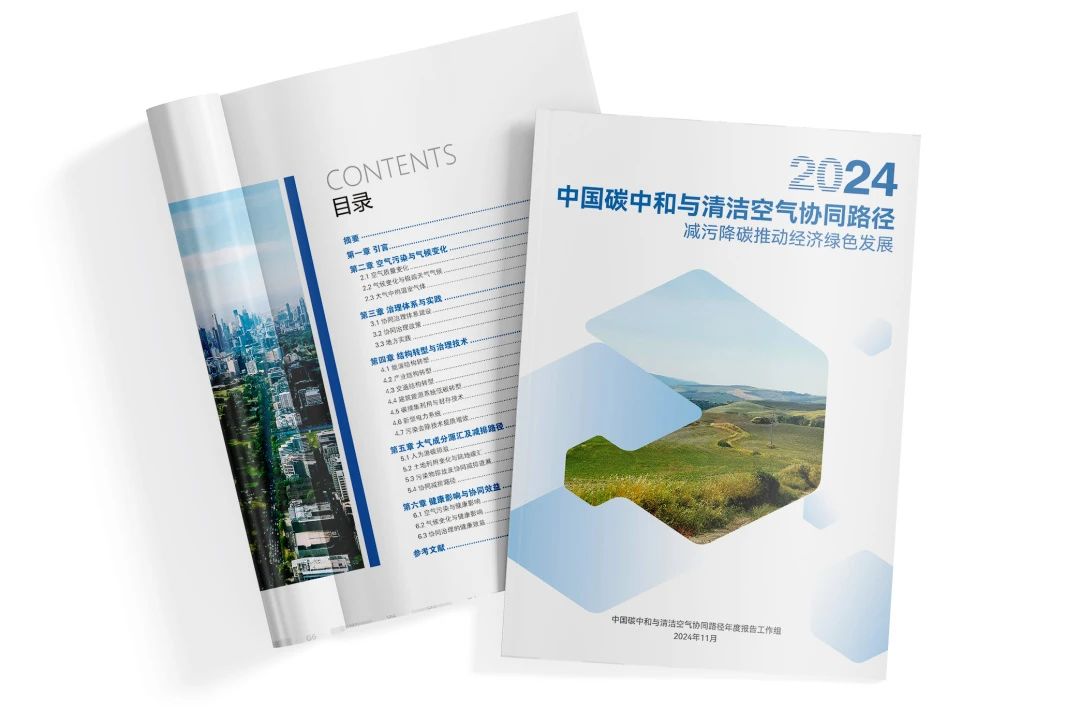The Clean Air Policy Partnership (CCAPP) 2024 Annual Meeting and the launch of the Synergistic Pathways for Carbon Neutrality and Clean Air in China (2024) report were successfully held on November 29. The event was co-organized by CCAPP, Tsinghua University’s Institute for Carbon Neutrality, the School of Atmospheric Sciences at Nanjing University of Information Science and Technology, the College of Environmental Sciences and Engineering at Peking University, the Chinese Academy of Environmental Planning (CAEP), and the Energy Foundation China. It was co-chaired by Professor Yin Zhicong, Associate Dean of the School of Atmospheric Sciences at Nanjing University of Information Science and Technology; Associate Professor Gong Jicheng of Peking University; and Professor Lu Xi, Assistant to the Dean of Tsinghua’s Institute for Carbon Neutrality and Professor at the School of Environment.

In his opening address, Professor He Kebin, Director of Tsinghua’s Institute for Carbon Neutrality and Academician of the Chinese Academy of Engineering, emphasized that 2024 marks a critical point for synergistic pollution reduction and carbon mitigation in China. He highlighted the transition from “dual control of energy consumption” to “dual control of carbon emissions” as a key step in the green transition. Despite China’s significant progress in improving air quality, pollution prevention has entered a more challenging phase in recent years, lending great importance to the latest report.
Wang Jinnan, Honorary President of CAEP and Academician of the Chinese Academy of Engineering, noted China’s achievements in renewable energy development and air quality improvement, which have been recognized by the United Nations. However, he also pointed out challenges such as the rebound of air pollution in some regions and the increasing frequency of extreme climate events. This year’s report focuses on promoting green economic development through synergistic governance and proposes an enhanced indicator system for monitoring progress.
Zou Ji, CEO and President of the Energy Foundation China, stressed that China is in a crucial period of formulating its second Nationally Determined Contributions (NDCs) and called for integrated strategies that combine pollution and carbon reduction with structural upgrades in energy, industry, and transportation.
The morning session featured keynote speeches on controlling coal consumption, climate extremes and challenges, health impacts of high-influence weather, and the updated E.A.C.H (Energy-Air-Climate-Health) strategy. Professor Yin Zhicong presented the main contents of the 2024 report, which refines the synergistic governance indicator system and analyzes challenges and solutions based on domestic and international comparisons.
The afternoon included two panel discussions on “Climate, Air, and Public Health” and “Synergistic Governance Benefits and Local Practices.” Experts exchanged views on regional climate change, public health impacts of extreme weather, health benefits of coordinated carbon and PM₂.₅ reduction, and urban-level coordination between air quality improvement and emission reduction.
In closing, Liu Xin, Director of the Energy Foundation’s Environmental Management Program, summarized key discussions and called for greater integration of macro-level low-carbon strategies with public health protection, structural adjustments in energy and industry, and region- and sector-specific planning during the 15th Five-Year Plan period.
Nearly 200 experts, researchers, industry representatives, and media attendees participated in the conference.
 Latest recommendations
Latest recommendations


